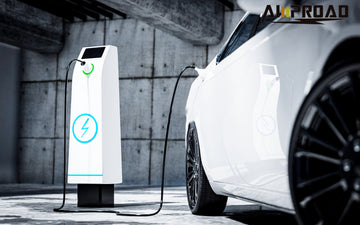
Glance around the roads these days and you'll notice an unmistakable trend – electric vehicles (EVs) are becoming increasingly commonplace. Their silent operation and zero direct emissions make them an environmentally-friendly alternative to gas-guzzling cars of the past. Governments worldwide are actively encouraging the development of new energy technologies and incentivizing people to embrace EVs as a green way to protect our planet from further climate change.
As EVs gain traction, a critical piece of infrastructure is needed to keep them charged and operational – the EV charger. There are several types available, designed for different charging speeds, locations, and vehicle connecters. Let's take a closer look at the main EV charger varieties populating our streets, parking garages, and homes.
Charging Speeds – AC vs DC Chargers
One of the primary ways to classify EV chargers is by their charging speed and power source – alternating current (AC) or direct current (DC). AC chargers tend to be slower but more affordable, while DC chargers provide ultra-fast charging capability but at a higher equipment cost.
AC Chargers - These fall into two levels defined by their power output:
Level 1 – The slowest option, Level 1 chargers run on a standard 120V household outlet and deliver around 1.4 to 1.9 kW of power. They are very affordable but take around 20-40 hours to fully charge an EV battery from empty.
Level 2 – Often referred to as "fast" chargers, Level 2 units require a 240V outlet like those used for large household appliances. Level 2 EV charger can deliver between 3.3 and 19.2 kW, charging an EV battery from empty in around 4-10 hours depending on the exact power level.
DC Chargers Sometimes called Level 3 or "super" chargers, DC chargers bypass the onboard AC-to-DC conversion components by providing a direct DC connection. This allows for extremely rapid charging at levels up to 350 kW at public stations. The downside is the very high equipment cost for these ultra-fast charging units.
Connector Types
Just as gas vehicles use different nozzle shapes at the pump, EV chargers connect to vehicles through distinct plugs and ports. The two major standards are:
J1772 – The connector used across North America and Japan features a thick rectangular plug with five pins. J1772 charger maxes out at around 19.2 kW on a 240V Level 2 circuit, making them well-suited for home/workplace use but too slow for public DC fast charging.
Mennekes (Type 2) – Popular across Europe, this seven-pin circular connector allows up to around 22 kW on a 400V three-phase circuit for AC Level 2 charging. It is also used for some public DC fast charging at higher current levels.
Location-Based Categories
Where a charger is installed also dictates its features and intended uses:
Public Chargers – Provided by government agencies or private businesses in public locations like parking lots and streets, these chargers are accessible to any EV driver who pulls up in need of a charge.
Dedicated Chargers – Companies and institutions often install dedicated chargers on their premises for use by customers, employees, tenants, etc. These are more controlled environments like shopping malls or offices.
Home Chargers – The most convenient option for EV owners is getting a home charging unit installed in their garage or driveway area. These compact Level 1 or Level 2 chargers allow easy overnight charging without leaving your house.
Plug Types
Depending on the country, standard electric plugs and outlets can vary for EVCS charging station:
North America: Common plugs include the NEMA 5-15 (120V Level 1), NEMA 14-50 (240V Level 2), and NEMA 6-50 (240V Level 2).
Europe: Outlets like the Type E/F "Schuko" are widely used for charging on domestic circuits.
Asia: Countries utilize Type A, Type B, Type G and other local outlet standards.
Public DC fast chargers tend to have the heavy-duty plug permanently tethered rather than using a household style outlet.
Installation Types
Chargers are also differentiated by how they get mounted and installed in a space:
Vertical/Pedestal – These freestanding models mount on a pedestal base and don't require wall-mounting, making them versatile for driveways, garages or open parking lots.
Wall-Mounted – As the name implies, these chargers fix directly onto a wall surface, ideal for covered parking areas or tighter spaces where floorspace is limited.
Portable – For maximum flexibility, some EV charger manufacturers like AMPROAD offer portable Level 2 chargers that can plug into standard outlets using a 14-50r adapter cord be moved around as needed. This allows easy charging at homes without permanent installation or on road trips.
So whether you're shopping for a home unit, considering installing chargers at your business, or just want to be an educated EV driver, understanding the different EV charger types is essential. AC or DC? Level 1, 2 or 3? Public or private installation? With the rapid growth of electrification, getting familiar with charging infrastructure will help us all adapt to the new era of EVs on our roads.



